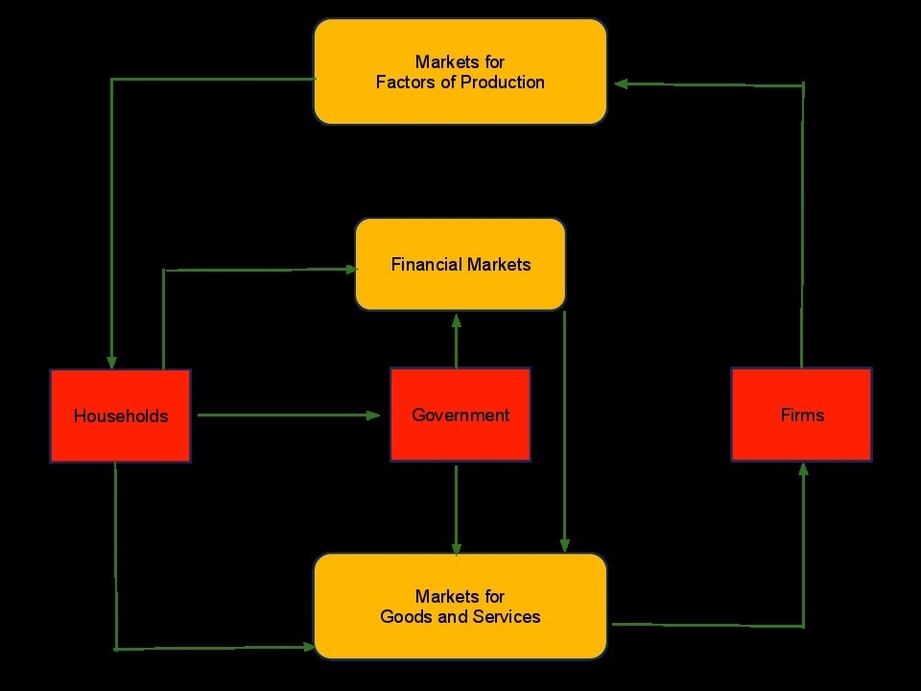
In macroeconomics, the circular flow model is a fundamental concept that illustrates how money moves through an economy. The model demonstrates how money flows from producers to workers as wages and flows back to producers as payment for products. In short, an economy is an endless circular flow of money .
The circular flow model is used to measure a nation’s income, as it measures both cash coming into and exiting a nation’s economy. It is also used to gauge the interconnectivity between sectors as a fully robust and strong economy will have interaction between components .
The model breaks the economy down into two primary players: households and corporations. It separates the markets that these participants operate in as markets for goods and services and the markets for the factors of production. Other sectors can be added for more robust cash flow tracking .
In a closed economy, the circular flow of income is a model that shows how money flows between households and businesses. It illustrates how households provide businesses with resources, such as labor and capital, and how businesses produce goods and services that households purchase .
The circular flow model demonstrates how money moves from producers to households and back again in an endless loop. In an economy, money moves from producers to workers as wages and then back from workers to producers as workers spend money on products and services. The models can be made more complex to include additions to the money supply, like exports, and leakages from the money supply, like imports. When all of these factors are totaled, the result is a nation’s gross domestic product (GDP) or the national income .
Analyzing the circular flow model and its current impact on GDP can help governments and central banks adjust monetary and fiscal policy to improve an economy .
